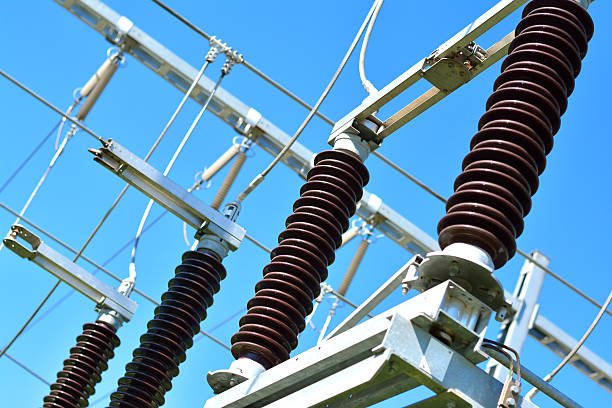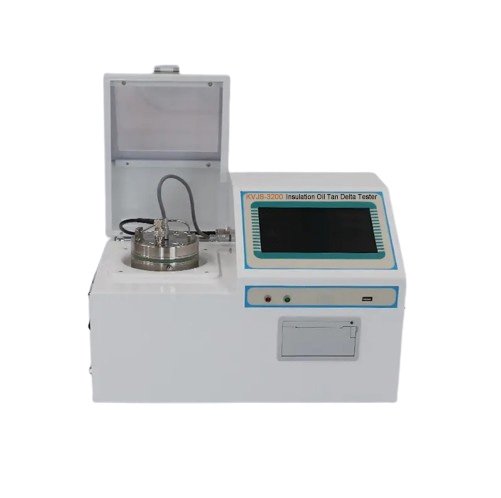For the power system, the transformer testing is of great significance and plays a key role.
Transformer Preventive maintenance is crucial to ensure the reliable operation, extend their lifespan, and prevent unexpected failures. This involves regular inspection, testing, and servicing. Here’s a detailed overview of transformer preventive maintenance tests .

1.Dissolved gas analysis in oil
It is difficult to find some local faults and heating defects solely relying on the electrical test method for transformer diagnosis. To find some the potential transformer fault and early diagnosis , the transformer oil gas chromatography this chemical detection method is very sensitive and effective . This has been proven in numerous fault diagnosis practices.
The principle of oil chromatography is based on the fact that the production rate of specific hydrocarbon gases varies with temperature. At a particular temperature, one gas typically reaches its maximum production rate. As the temperature increases, the gases with the highest production rates appear in the following order: CH4, C2H6, C2H4, and C2H2.
This also proves that there is a corresponding relationship between fault temperature and the content of dissolved gases. Local overheating, corona discharge, and arcing are the main causes of fault characteristic gases in oil-immersed paper insulation. During normal transformer operation, the oil and solid insulation gradually age, deteriorate, and decompose, producing a very small amount of gas (mainly including hydrogen (H2), methane (CH4), ethylene (C2H4), acetylene (C2H2), carbon monoxide (CO), and carbon dioxide (CO2)). When there is internal overheating, discharge faults, or internal insulation moisture, the concentration of these gases increases rapidly. Most of these gases dissolve in the insulating oil, with a small portion rising to the surface and entering the gas relay.
Experience has shown that the amount of various gas components in the oil is related to the nature and severity of the fault. Different faults or energy densities produce different gas characteristics. Therefore, regularly measuring the composition and content of gases dissolved in the oil is of great importance for the early detection of latent faults within oil-filled power equipment, yielding significant and practical results
Power transformer internal faults are mainly overheating faults, discharge faults and insulation moisture and other types. According to relevant information, in the fault transformer statistics show that: overheating faults accounted for 63%; high-energy discharge faults accounted for 18.1%; overheating and high-energy discharge faults accounted for 10%; spark discharge faults accounted for 7%; moisture or partial discharge faults accounted for 1.9%. And in the overheating faults, tap changer contact failure accounted for 50%; iron core multi-point grounding and local short circuit or leakage circulating current accounted for about 33%; conductor overheating and joints or loose fasteners caused by overheating accounted for about 14. 4%; the remaining 2. 1% for other faults, such as silica gel into the body of the local oil pipeline caused by the clogging, so that the local heat dissipation caused by the thermal faults.
Arc discharge to the winding turns, interlayer insulation breakdown is the main, followed by lead breakage or flashover to ground and tap changer flying fox and other faults. Spark discharge is common in the casing lead to the potential is not fixed casing conductive tube, pressure ring and other discharges; poor local contact with the lead or core grounding plate contact caused by poor discharges; tap changer pulling fork or metal screws potential suspension caused by discharges and so on.
Accurate judgment of the fault location of the transformer depends on a comprehensive understanding of its internal structure and operating conditions, combined with chromatographic data and other preventive tests (direct resistance, insulation, ratio, leakage, no-load, etc.) for comparison.
At the same time, it should also be noted that due to fault gas production and normal operation of non-fault gas generated in the technology can not be separated, in some cases some gases may not be caused by equipment failure, such as water in the oil can be generated with the role of iron hydrogen, overheating of the iron core between the layers of the oil film cleavage can be generated hydrogen, the new stainless steel may be adsorbed in the process or welding of hydrogen and running after the release of a slow, in addition, some operations can be generated Fault gas, such as on-load regulator transformer in the diverter switch oil to the transformer main oil tank leakage or selector switch in a certain position when the action of suspended potential discharge, equipment tank with oil welding, the original injection of oil containing some gas components after overhaul of the oil filtration is not complete to leave a residual gas.
2.Transformer winding DC resistance measurement
It is a convenient and effective examination of the winding insulation and current circuit connection status of the test, can react to the winding welding quality, winding turn-to-turn short-circuit, winding broken strands or lead wires broken, tap changer and wire contact failure and other faults, in fact, it is also to determine the DC resistance of each phase of the winding DC resistance is balanced, the regulator switch gear is the right means of effective.

For a long time, winding DC resistance measurement has been regarded as one of the main means to investigate the insulation of the transformer, and sometimes even the only way to determine the status of the current loop connection. Such as a transformer on the low-voltage side of the 10KV line DC resistance test, found that the imbalance rate of 2. 17%, more than 1% of the ministry’s standard value of more than double the chromatographic analysis does not exist overheating fault.
Every year pre-test data reflecting the DC resistance imbalance coefficient of the exceeding the standard, and other items are normal, the analysis of the conversion to determine that the C-phase resistance value is larger, judging that there is a C-phase winding broken strand problem, after the hanging cover inspection After analyzing and converting, it was determined that the resistance value of C-phase was large, and it was judged that there was a broken strand in the C-phase winding. Transformer DC resistance measurement to find some major defects in the circuit plays a significant role.
3. Transformer insulation measurement
The insulation resistance and absorption ratio or polarization index of the windings together with the casing have high sensitivity to the overall insulation condition of the transformer, which can effectively check out the transformer insulation as a whole damp, parts of the surface damp or dirty and penetrating concentration of defects, such as a variety of penetrating short-circuits, porcelain rupture, the lead to the shell, the body of the body of the phenomenon caused by copper wire bridging semi-transparent or metallic short-circuits, and so on.
Relatively speaking, relying solely on the absolute value of insulation resistance size of the winding insulation for judgment, its sensitivity, effectiveness is low. On the one hand, due to the measurement of the test voltage is too low, it is difficult to expose defects, on the other hand, also because of the insulation resistance and winding insulation structure size, insulation material varieties, winding temperature, but for the core clamps, through the core bolts and other components, measurement of the insulation resistance often reflects the fault, this is because these parts of the insulation structure is relatively simple, the insulation medium is a single, under normal circumstances basically do not withstand the voltage, insulation more Is to play a role in isolation, unlike the winding insulation to withstand high voltages.
4.Transformer Capacitance and dielectric loss measurement
It is mainly used to check the transformer as a whole by the moisture oil deterioration, winding on the attached sludge and serious local defects. Dielectric measurement is often affected by surface leakage and external conditions (such as interference with electric field and atmospheric conditions), and therefore to take measures to reduce and eliminate the impact.
We generally measure the tgD on the field together with the casing, but in order to improve the accuracy of the measurement and sensitivity to detect defects, and sometimes also decomposition test, in order to determine the location of defects. For example, in the pre-test of the transformer, found that a phase of the casing medium exceeds the standard, and insulation failed, low readings, after analysis may be caused by moisture, and then pulled out to check the bottom of the end of the casing found that the casing has been the whole casing of moisture, and then do the test after drying treatment, the indicators are in line with the requirements.
Measurement of leakage current and insulation resistance is similar, only its sensitivity is higher, can effectively find some other test items can not be found in the transformer local defects. Leakage current value and transformer insulation structure, temperature and other factors, in the
Dielectric loss factor tgD and leakage current test effectiveness is with the increase in voltage level of the transformer, the capacity and volume of the increase and decline, so simply rely on tgD and leakage current to determine the insulation condition of the windings of the possibility of small, this is mainly because of the two test voltage is too low, insulation defects are difficult to fully exposed. For capacitive equipment, practice has proved that such as capacitive bushings, capacitive voltage transformers, coupling capacitors, etc., the measurement of tgD and capacitance CX is still an effective means of fault diagnosis.
5. AC withstand voltage test
It is the effective methods for the insulation strength , especially for the assessment of the main insulation of the local defects, such as the winding of the main insulation moisture, cracking or in the transportation process caused by the winding loose, lead distance is not enough and the winding insulation attached to the dirt. AC hipot testing is conducted to check whether the insulation structure of the equipment is qualified and to ensure that the equipment can withstand overvoltage during operation without breakdown or flashover.

According to the IEC 60076 Standard and IEEE C57.12.00 Standard, the test voltage typically applied is 70kV AC (rms) for a duration of 1 minute for 35kV transformer .
6. Transformer Coil Winding deformation Testing
Transformer winding deformation refers to the role of electric power and mechanical force, the size or shape of the winding irreversible changes, including axial and radial size changes, body transfer, winding distortion, bulging and turn-to-turn short circuit.
Winding deformation is a major hidden danger of the safe operation of the power system, once the winding deformation is not diagnosed to continue to put into operation is very likely to lead to accidents, and in severe cases burned coil.Transformer winding deformation caused by the main reasons are.
6.1 Short-circuit fault current impact, electric power. Transofrmer winding is easy to destroy or deformation. Electromotive force is generated in the winding of the short-circuit inrush current and magnetic leakage interaction results, in operation, due to the spoke and axial electromotive force at the same time, may make the whole winding torsion.
6.3 In the transportation or installation by accidental impact, bumps and vibration. For example, a power supply department suffered a strong impact in the 35KV, 20000KVA main transformer transportation. Afterwards in the transformer handover hanging cover inspection, found that the lower part of the tank fixed body of all 4 bolts welded cracked, the upper part of the body positioning of the 4 positioning nails are all loose, and in the positioning plate cut out a small groove. Body to the oil pillow direction longitudinal displacement 11mm, lateral displacement 23mm, the winding to the end of the circle misalignment, up to 30mm, can see the body has no fixed device and in a free state, and after long-distance transportation and many grouping, the body in the tank shaking, will cause transformer damage.
6.4 Protection system has a dead zone. It can experience the action failure, resulting in the transformer to withstand stable short-circuit current action for a long time, resulting in winding deformation.
Conclusion
In the transformer maintenance program or fault diagnosis, preventive test results are still indispensable diagnostic parameters. Each preventive test project can not be viewed in isolation, several projects should be combined with a comprehensive analysis of the test results, which will effectively improve the quality of the transformer.
How often to conduct a preventive test on the transformer?
Regular test on the operation of the transformer, the main purpose is to supervise its insulation condition, generally every year for a preventive test of the transformer.
What test items are required for transformer Preventive Tests ?
it mainly includes dissolved gas analysis in oil, transformer winding resistance measurement, transformer insulation testing, capacitance and dissipation loss factor tgD, AC withstand voltage testing , Transformer coil winding deformation test ,Transformer oil testing
Here’s a detailed list of transformer acceptance testing and preventive maintenance tests
| Test Object | Testing Item | Test Equipment | Details |
| Transformer | Transformer dissolved gas analysis in oil | KVSP-H | Transformer Oil Gas Chromatography Analyzer uses chromatographic method to determine the content of dissolved gas in transformer oil. |
| Transformer winding DC resistance measurement | KVZR-20A | Check the connection or mechanical characteristics between the windings and the winding to leads, the balance for resistance between the windings, | |
| Insulation Resistance Tester | KV-3010 | Insulation resistance and absorption ratio of transformer | |
| Transformer Tan Delta Tester | KV-6000A | Measurement of dielectric loss(tgδ)and the capacitance (Cx) of electric equipment | |
| AC Withstand Voltage Tester | KVYD | Effective way to determine the insulation strength for electric equipment | |
| Transformer winding deformation analyzer | KVRB | Judge the internal faults of transformer adopting the frequency response analysis method | |
| Transformer Oil Testing | KV | Electrical performance of transformer oil (Transformer insulation oil testing, transformer loss angle testing, transformer oil moisture content testing ) |





